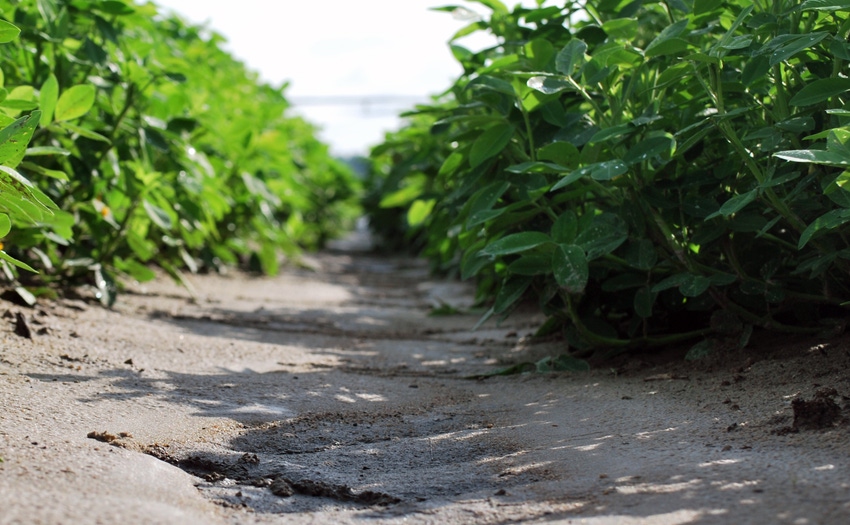January 10, 2017

Although my colleagues and I are doing our best to educate growers about product stewardship, my 25 years of Extension experience tells me that it is possible dicamba will get on a few non-labeled crops in 2017.
There is certainly a lot of buzz and interest surrounding the recent registrations of dicamba (Xtendimax with Vapor Grip and Engenia) for use on dicamba-tolerant cotton and soybean. Many are excited to get their hands on this technology while others are concerned about the potential effects of off-target movement (i.e. spray drift and volatility).
Since I am the self-proclaimed “Peanut Weed Man,” I have gotten numerous inquiries from growers about how peanuts might respond to exposure to dicamba. Over the last few years, my cracker-jack team of graduate students and technicians (currently 3 including myself) has worked on this issue. Thus, I have a reasonable idea on what might happen to Georgia’s most famous crop.
Perhaps the two most important things to consider when evaluating the potential effects of dicamba on peanut are rate and timing (or peanut stage of growth). There is no question that dicamba if applied at a high-enough rate and at certain times can cause significant peanut injury and yield loss. However, peanut plants have also exhibited remarkable tolerance to lower dicamba rates, especially at 90 days after planting. For research conducted in 2016, I sprayed 1X, 1/10thX, and 1/100thX rates of dicamba directly on peanuts.
The biggest problem for mad scientists like me is trying to trying to figure out exactly how much dicamba is in a spray drift or volatility rate? Previous research in soybean suggests dicamba vapor drift exposure is equivalent to a 1/1000thX rate. Based upon our data, that dicamba rate is unlikely to cause major problems in peanut.
Many could argue spray drift rates of dicamba often range between 1/10thX and 1/100thX rates.
In 2016, 1/10thX rates of dicamba caused 3 percent to 23 percent yield losses. A 1/100th X rate caused 0 percent to 8 percent yield losses depending upon time of application.
Results from previous peanut/dicamba research can be found in this UGA Extension publication.
As all the data shows, my earlier stated rate/timing hypothesis is very relevant and it is likely not every peanut/dicamba exposure case will result in a complete disaster.
In the last few months, I have learned that the amount of solution left in a spray tank is often referred to as “heel.” Therefore, spray-tank heel can be another source of unintentionally applied dicamba. Prior research suggests dicamba heel rates could range between 1/50thX to 1/400thX. It should be no surprise to hear then that sprayer cleanout after dicamba applications will continue to be critical. Also, I would not assume that the heel in any spray tank is just plain old H2O!
At the time I penned this particular article (December 20, 2016), there was no official EPA tolerance level established for dicamba on peanut. This means that if dicamba shows up on or in any peanuts that the crop could not legally enter the food chain. Consequently, peanuts from fields that accidently get exposed to dicamba will have to be tested for residues before the crop can be sold.
Improvements in formulations and spray nozzles, although welcome and very helpful, will not completely protect you from off-target movement if dicamba is applied during unfavorable conditions near sensitive crops. I am hopeful that our current educational efforts (Using Pesticides Wisely training) will help minimize potential problems with off-target movement of all auxin herbicides. However, I am also grey-haired enough to realize that stuff happens.
If you live in Georgia, your county Extension agent and I, upon request, will be there to assist when and if it does! I look forward to visiting with you sometime this winter.
As always, good weed hunting!
About the Author(s)
You May Also Like






